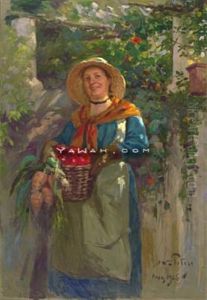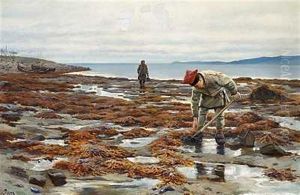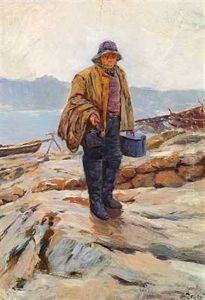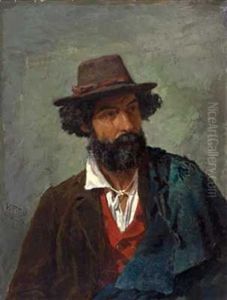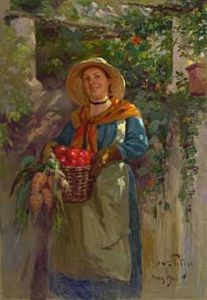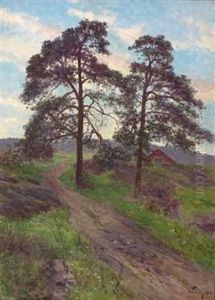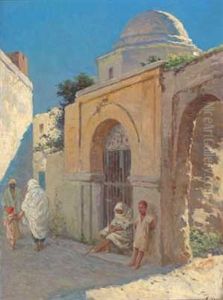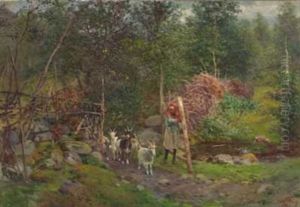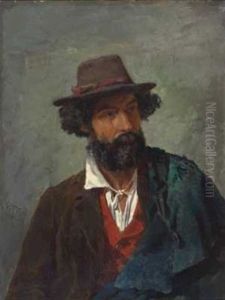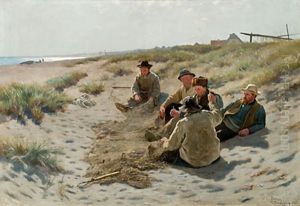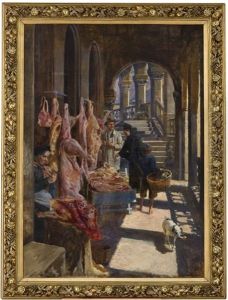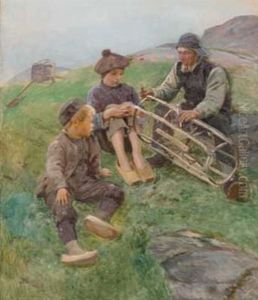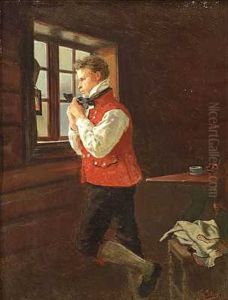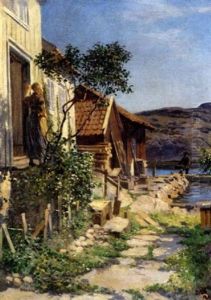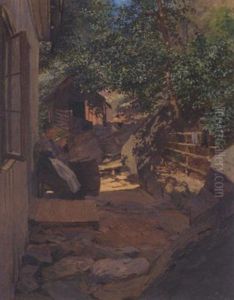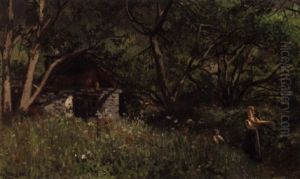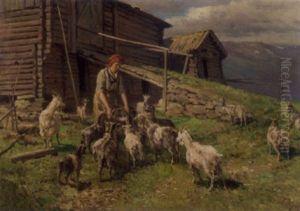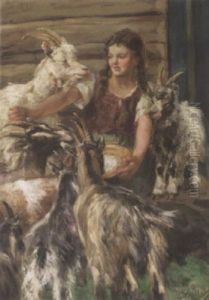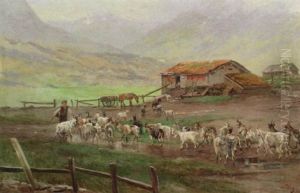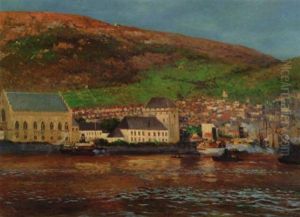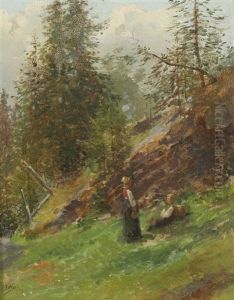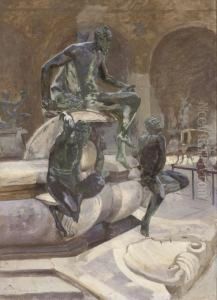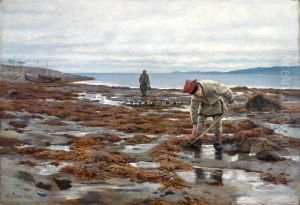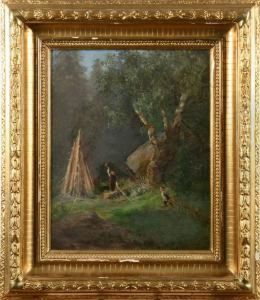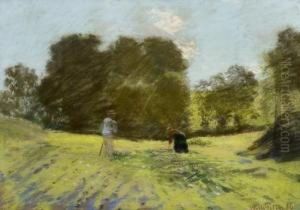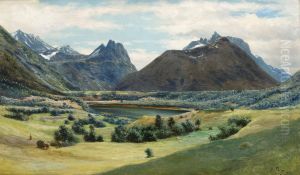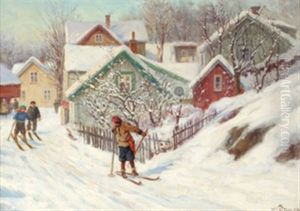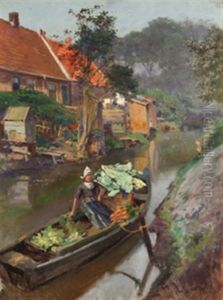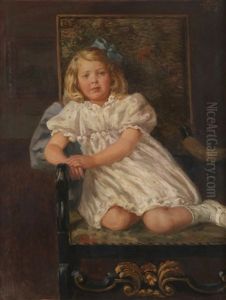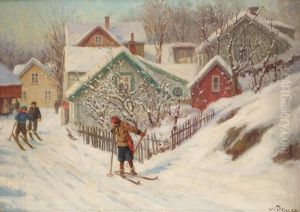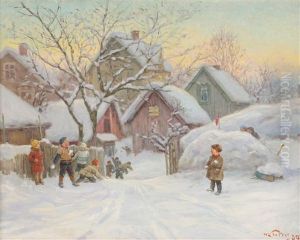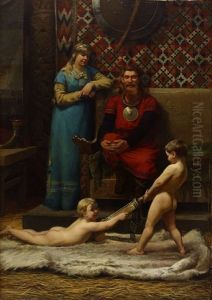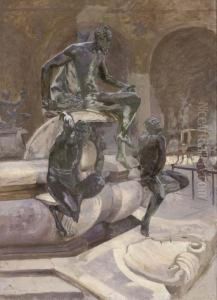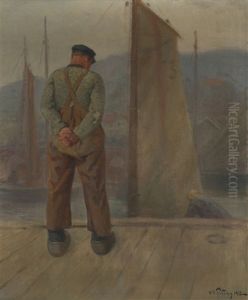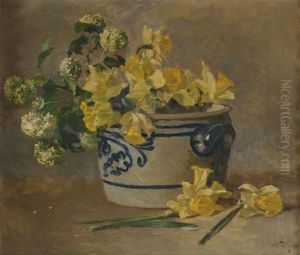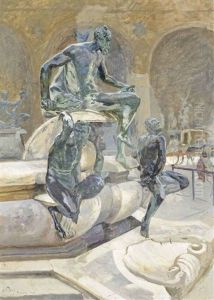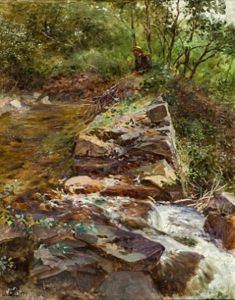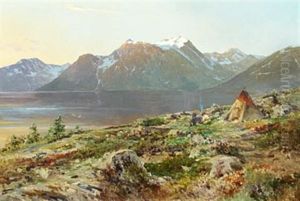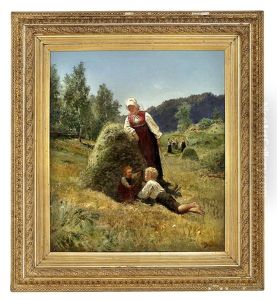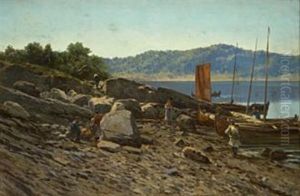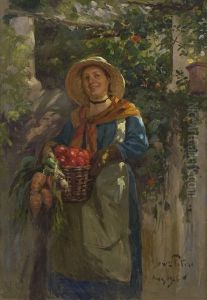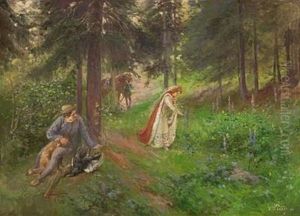Wilhelm Otto Peters Paintings
Wilhelm Otto Peters was a German painter, born in 1851 in the vibrant city of Berlin. His life spanned the late 19th and early 20th centuries, a period marked by significant transformations in the arts across Europe. Peters was deeply embedded in the artistic movements of his time, contributing to the evolving landscape of German painting. He passed away in 1930, leaving behind a legacy that had been influenced by the tumultuous shifts of his era, including the impacts of the Industrial Revolution and the onset of modernism in art.
Peters' career was notably diverse, encompassing a range of subjects from portrait and genre scenes to landscapes and urban vistas. His artistic journey began with traditional training, likely immersed in the academies of Germany, which at the time were strongholds of classical art education. However, like many artists of his generation, Peters was not immune to the allure of new ideas and techniques that were sweeping across Europe. His work gradually showed an engagement with the Impressionist movement, characterized by a lighter palette, visible brushstrokes, and an interest in capturing fleeting moments of everyday life.
Despite the lack of extensive documentation on his personal life, Peters' oeuvre suggests a deep connection with the German landscape and its people. His paintings often depicted the rural and urban scenes of Germany, reflecting both the beauty and the hardships of the era. Peters was also known to have been part of the Berlin Secession, a group of artists who broke away from the traditional art establishments to create art that was more in tune with the modern world. This affiliation further illustrates his commitment to exploring new artistic directions.
Wilhelm Otto Peters did not gain the same level of fame as some of his contemporaries, such as Max Liebermann or Lovis Corinth, but his work remains a valuable part of the narrative of German art history. His paintings, with their blend of traditional techniques and emerging modernist sensibilities, offer insights into the transitional period of late 19th and early 20th-century art. Today, his contributions are recognized in various collections and museums in Germany and beyond, serving as a testament to his skill and adaptability as an artist.

